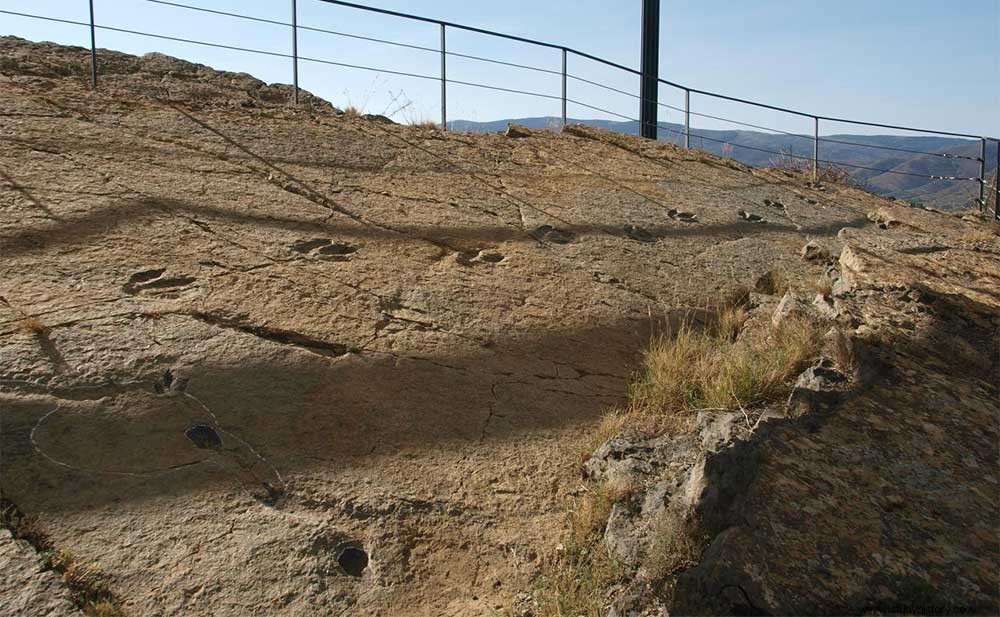In the Rioja town of Enciso is the most important "Jurassic Park" in Europe and one of the most interesting paleontological sites on the continent. It is a route of about twenty-three kilometers full of traces of the past. The route extends from Enciso to the Virgen el Campo site, where there are abundant tracks of iguanodonts and carnosaurs and of a gigantic tyrannosaurus rex . A walk through the past through the route of the dinosaurs that can begin at the Enciso Paleontological Center and continue with a guided tour by specialists to learn more about up to forty footprint sites scattered throughout the Riojan mountains.
Past the Enciso area
Although it may seem incredible today, there was a time when the current mountain range did not exist. During the Jurassic period, the Tethys Sea, which covered much of Europe, penetrated what is now the Ebro Valley . Those were the times of the movement of the continents. The land was occupied by river beds, lakes and abundant vegetation. It was a flat area, similar to what is found today in the deltas of large rivers. All this amount of water and vegetation allowed the development of an exuberant life that made possible the existence of gigantic prehistoric animals.

Formation of the footprints of prehistoric animals
At the same time, this terrain facilitated the formation of large mudflats, thanks to which the tracks of the enormous animals can be seen today. A dinosaur stepped on the muddy ground. The mud dried quickly, hardening, and the perfectly marked footprint was covered with sediment. In this way the fossil footprints were formed, which appeared when the sediments were removed. These footprints were discovered throughout the seventies and since then excavations and palaeoichtological studies have revealed the way of life of these huge almost legendary animals in an environment very different from today. Along with the footprints of the dinosaurs, a large number of fossils of fish, turtles, crocodiles and even the trunk of a tree have also been found.From the information provided by the footprints, it is known whether the dinosaurs walked on two or four legs , if they were herbivores or carnivores , it is possible to guess their size, the walking speed they developed and multiple aspects of their activity and behavior.
Enciso Paleontological Center
In the Enciso Paleontological Center for the study, promotion and dissemination of paleontological activities carried out throughout the region of La Rioja, a permanent exhibition has been set up that will facilitate understanding of the sites, so it is highly recommended to visit it before address these. His tour introduces us to the complex world of the study of dinosaurs and other fossil remains. The models, panels and photographs of the installation reveal some of the most recent knowledge about the footprints of dinosaurs and their environment. The exhibition is completed with life-size reproductions of different dinosaur remains, three-dimensional models of the most abundant species in La Rioja and original pieces from the institution's collections, found in the different excavations carried out. The importance of the sites around Enciso is twofold:on the one hand, we must take into account their great scientific value, since there are very few studies carried out on traces from that same period, but in addition to their study Relevant information is extracted about the vital acts and the environment of these large animals. It is also important to highlight the heritage aspect, since there are few places in the world with such a well-preserved number of dinosaur footprints.
